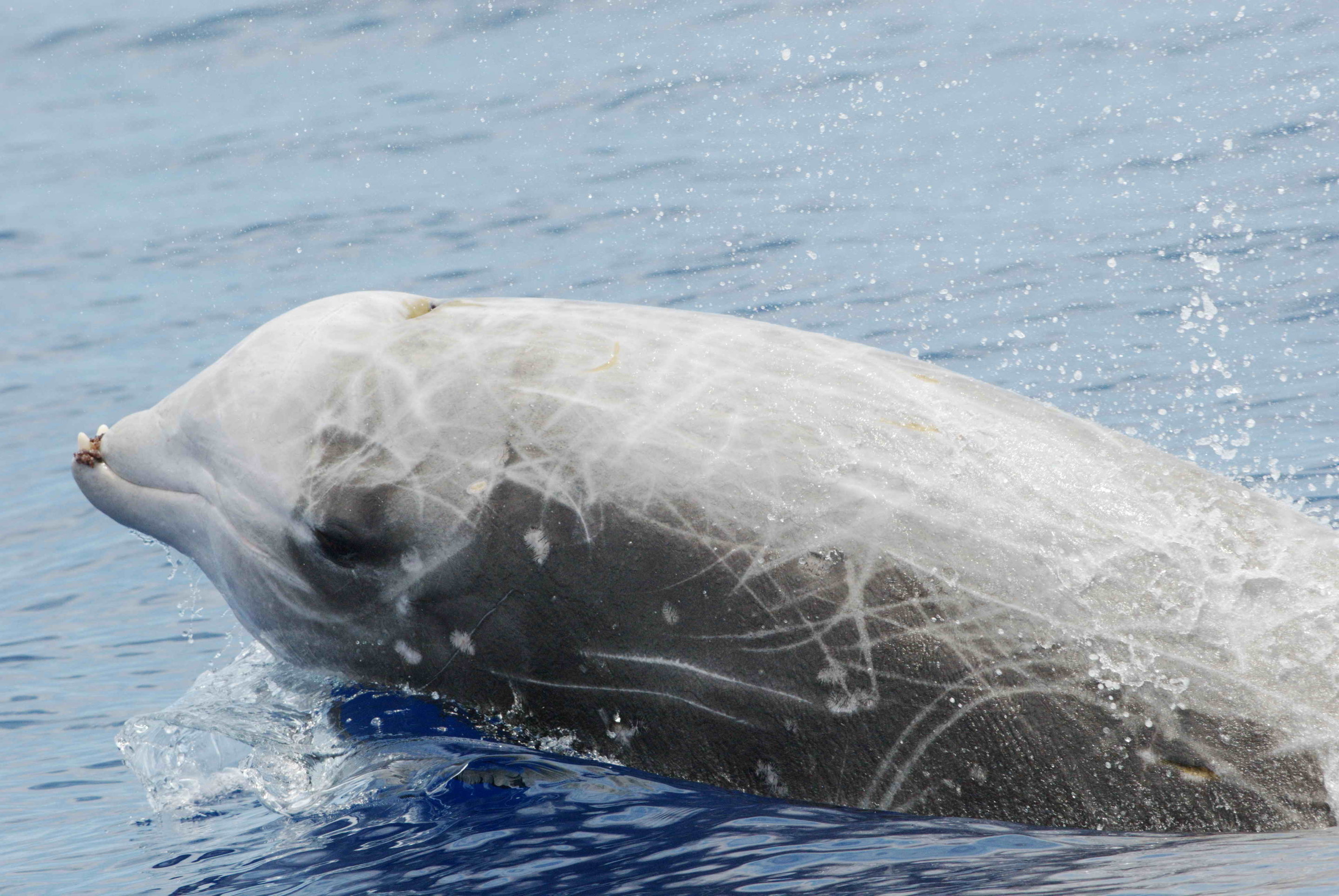Spade-Toothed Beaked Whales

Spade-toothed beaked whales are a fascinating species of beaked whale known for their unique physical attributes. They possess several distinctive features that set them apart from other beaked whale species.
Physical Characteristics, Spade toothed beaked whales
Spade-toothed beaked whales are medium-sized whales, typically measuring around 13-16 feet in length and weighing up to 2,000 pounds. They have a robust, torpedo-shaped body with a small, rounded head and a short, beak-like snout. Their dorsal fin is located about two-thirds of the way down their backs, and they have a pair of small, triangular pectoral fins.
One of the most distinctive features of spade-toothed beaked whales is their spade-shaped teeth. The males have two pairs of enlarged teeth on their lower jaws, which they use for fighting and display. These teeth can grow up to 6 inches long and are thought to be used for attracting females and establishing dominance.
Spade-toothed beaked whales also have a unique coloration. Their backs are dark gray or black, while their bellies are lighter gray or white. They often have a white or gray patch on their throats, and their sides may be covered in pale spots or scars.
These physical adaptations are essential for the survival of spade-toothed beaked whales. Their streamlined bodies allow them to swim quickly and efficiently through the water, while their spade-shaped teeth help them to defend themselves and attract mates. Their coloration provides them with camouflage in the deep ocean, and their spots and scars may help them to identify each other.
Habitat and Distribution of Spade-Toothed Beaked Whales: Spade Toothed Beaked Whales

Spade toothed beaked whales –
Spade-toothed beaked whales are found in tropical and temperate waters worldwide. They prefer deep waters, typically inhabiting areas with depths ranging from 500 to 3,000 meters. These whales are often found near continental slopes, seamounts, and underwater canyons. Their distribution patterns are influenced by factors such as prey availability, water temperature, and the presence of suitable habitats.
Factors Influencing Distribution Patterns
- Prey Availability: Spade-toothed beaked whales feed primarily on deep-sea fish and squid. Their distribution is influenced by the availability of these prey species, which tend to congregate in areas with abundant food sources.
- Water Temperature: Spade-toothed beaked whales prefer waters with temperatures ranging from 5 to 20 degrees Celsius. They are known to avoid areas with extreme temperature fluctuations or strong currents.
- Suitable Habitats: These whales rely on deep-sea habitats for foraging, resting, and breeding. Their distribution is influenced by the presence of suitable habitats, such as continental slopes, seamounts, and underwater canyons, which provide shelter and access to prey.
Behavior and Communication in Spade-Toothed Beaked Whales
Spade-toothed beaked whales are mysterious creatures that have fascinated scientists and researchers for years. Their elusive nature has made studying their behavior and communication challenging, but advancements in technology and research methods have provided valuable insights into their fascinating world.
Social Behavior and Group Dynamics:
Spade-toothed beaked whales are highly social animals that live in small, closely-knit groups of up to 15 individuals. These groups are typically composed of related females and their offspring, while adult males may form temporary alliances or live solitary lives. Within the group, there is a clear social hierarchy, with older and larger individuals holding dominant positions. These whales engage in various social behaviors, including cooperative hunting, mutual grooming, and playful interactions.
Communication Methods:
Spade-toothed beaked whales communicate using a complex repertoire of vocalizations and body language. Their vocalizations are highly varied and include clicks, whistles, and pulsed calls. These calls are used for echolocation, which helps them navigate their environment and locate prey. They also use body language, such as breaching, tail slapping, and headbutting, to communicate with each other.
Challenges and Advancements in Studying Behavior:
Studying the behavior of spade-toothed beaked whales is challenging due to their elusive nature and deep-diving habits. However, advancements in technology, such as underwater cameras and acoustic monitoring devices, have allowed researchers to gain valuable insights into their behavior. These technologies have enabled scientists to observe their social interactions, communication patterns, and hunting strategies. Despite these advancements, much remains unknown about the behavior of these fascinating creatures, and ongoing research continues to shed light on their complex and intriguing world.
Spade-toothed beaked whales, known for their distinctive teeth, are elusive creatures that inhabit the deep ocean. These whales have a unique way of hunting, using echolocation to stun their prey. Their fascinating behavior has attracted the attention of researchers like Raphael Claus , who has studied their communication and social dynamics.
By observing these whales, Claus has gained insights into their complex underwater world, shedding light on the mysteries of these enigmatic creatures.
Spade toothed beaked whales are known for their unique teeth. These whales are often found in deep waters and have been the subject of research by former CIA analysts in South Korea. The research has helped to shed light on the behavior and biology of these fascinating creatures.
Spade toothed beaked whales are an important part of the marine ecosystem and their conservation is essential for the health of our oceans.